Ever since ruby chocolate was revealed at a Shanghai trade show in 2017, the ever-wandering eye of the public has been curious about pink chocolate. China's not exactly known as a hub for craft chocolate making, after all. Yet one of the largest chocolate manufacturers in the world chose to debut their new type of chocolate there.
Then they debuted the first publicly available version of the new chocolate in Japan, moving on to Europe in mid-2018, and then the US in 2019. More recently, the company has revealed another new creation: WholeFruit Chocolate. So what's all the ruby chocolate excitement about, and is it even warranted?
*Article first published March 2018, and updated dozens of times since with more sources for where to buy ruby chocolate, as well as frequently-asked questions and further information on its global spread.
Click here to see ruby chocolate prices on Amazon.
Jump To
What is Ruby Chocolate?
Much like blonde chocolate was a few years before, ruby chocolate has been touted as the fourth type of chocolate, behind white, milk, and dark chocolates. It's also more recently been dubbed 'millennial chocolate,' though that nickname never caught on very well. Barry Callebaut, the inventing company of ruby chocolate has named so-called "ruby cocoa beans" as the source of the characteristic color.
The ruby cocoa bean is not actually a new type of cacao, nor has it been genetically modified, at least according to Callebaut.
Researchers have made a concerted effort during the last few decades to record & store the genetic information of each cacao varietal that's been identified. So this is definitely not some new "ruby cocoa bean" discovered in the wild.
Ruby cacao is merely the name given to the beans used to make ruby chocolate, and their fermentation process (& other processing) remains a trade secret. Could it be the same red-hued cacao beans patented by Callebaut in 2009?
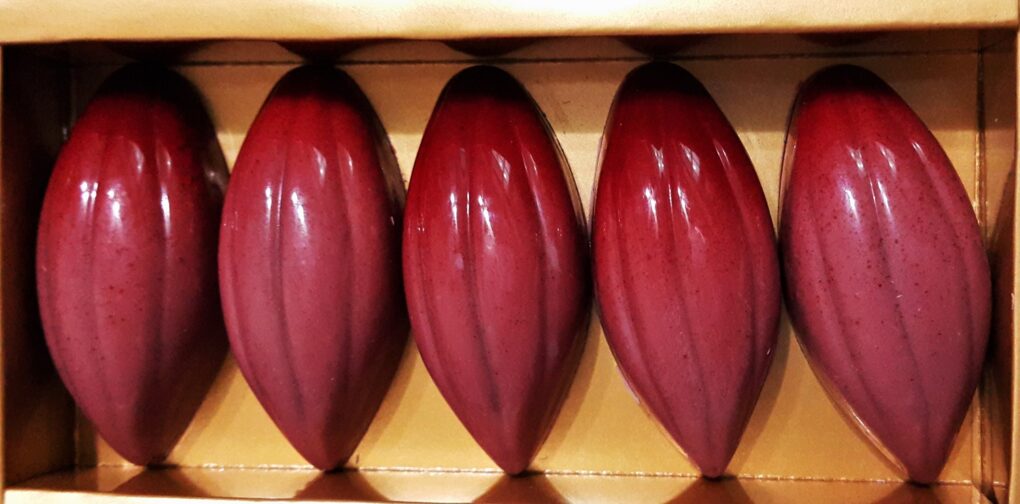
No matter what the answer, pink cacao pods are not it. In fact, legally Callebaut has left consumers in the dark, speculating about pink chocolate made from some sort of rare pink cocoa pods. The company cites trade secrets.
And since Callebaut adamantly claims that no genetic modification of any kind is involved, that leads us to believe that it has something to do with how the farmers treat these "ruby cacao beans" after harvest. So what is ruby chocolate made of?
To answer this question, we must look both at the ingredients list and where those ingredients come from. So where does ruby chocolate come from, according to its ingredients? Well, as of 2019 the so-called ruby cacao bean comes from Brazil, Ecuador, and the Ivory Coast.
But Callebaut has not been as open regarding the origin of ruby chocolate's other ingredients: cocoa butter, sugar, citric acid, and milk powder, as well as emulsifiers. Newer versions also include cocoa liquor (unsweetened chocolate) and 'natural flavors,' but still almost no cocoa solids.
Some people think ruby chocolate is fake, just a flavored cocoa butter or otherwise colored fat. But I can guarantee that there are indeed cacao beans in this pink chocolate. I've tried it myself, several times now. The first time was just two weeks after the January 19th, 2018 Japan release date.
Since then I've been of the strong belief that ruby chocolate is the product of years of market research, and a rather creative approach to chocolate making.
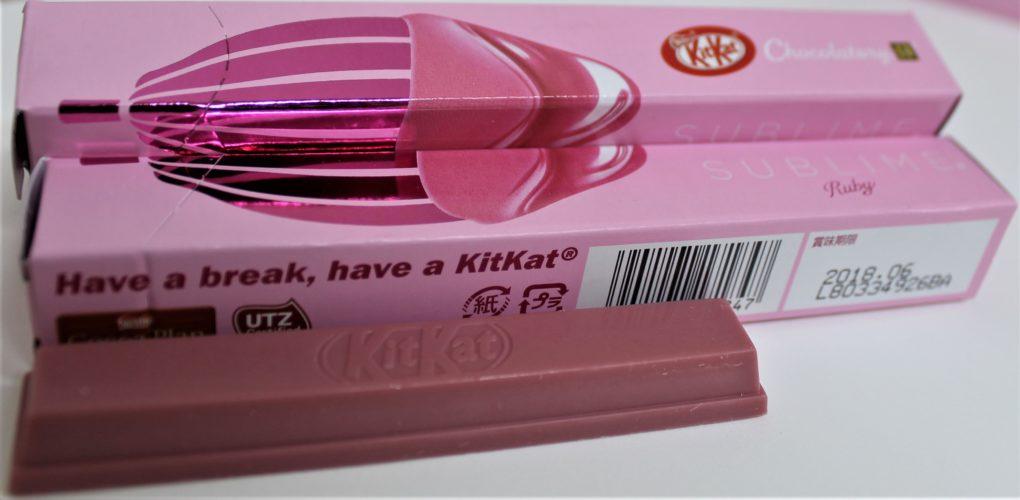
History of Ruby Chocolate
The nickname of this chocolate, "Millennial Chocolate," is a careful branding choice and a not-so-subtle hint at their target market. But so far this branding choice has still not quite worked out in their favor.
The long stretch of time between the announcement of ruby chocolate and the early 2018 release of the ruby kit kat seems to have left the public relatively disinterested. Longer stretches between releases in different countries furthered that disinterest, including the launch of US Ruby Chocolate products.
What has people really intrigued seems to be Callebaut's implication of discovering some kind of new ruby cocoa bean in the wild. Even though Barry Callebaut himself states that ruby beans come from a variety of regions— Brazil, Ecuador, and the Ivory Coast— by implying that the bean is special in some way, the company continues to lend a uniqueness to the product.
Ruby chocolate appeals to the desire of people to be trendy and one-of-a-kind, reinforced by the fact that there were a limited number of ruby kit kats made available in that first batch (just 5000 in the world, supposedly). There have clearly been many more runs of ruby kit kats since then, but the novelty has worn off.
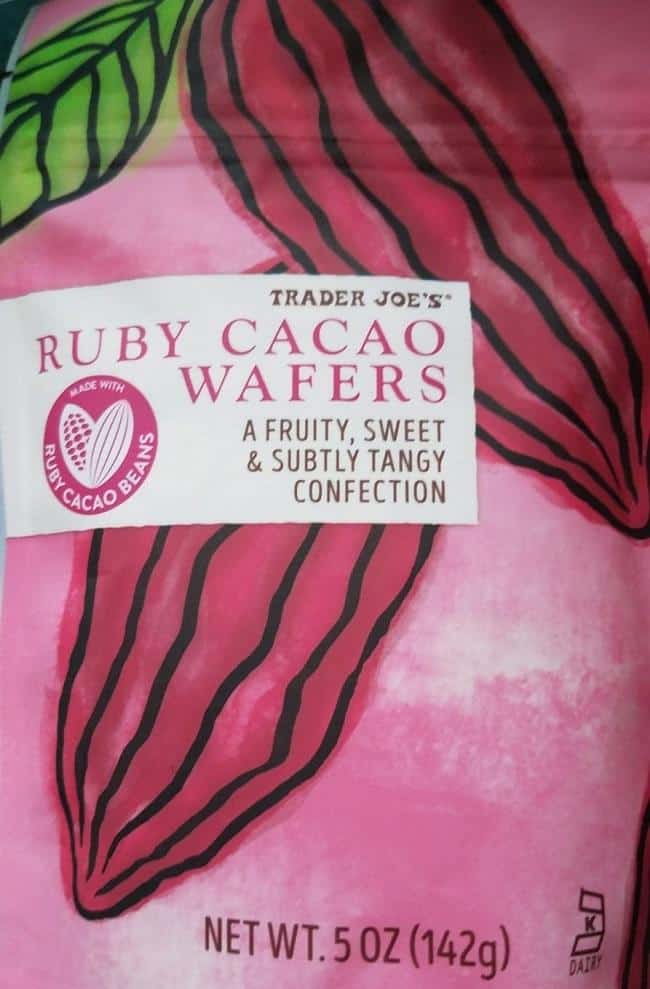
I suppose we'll never know how much Nestle paid for the right to be the first distributors of a ruby chocolate product, but my guess is a lot, if the ~$94USD sets of 5 ruby kit kats (+ some freebie kit kats) is any indication. But the ruby cocoa kitkat was the first pink chocolate bar I tasted, and was the only ruby chocolate available internationally for many months.
This is because Nestle had the rights to sole distribution of ruby chocolate for 6 months; a deal which apparently ended in April 2018, when ruby chocolate was made available to culinary professionals in Belgium.
The name of that product is Ruby RB1, and it was quickly made available to chocolate professionals in other parts of Europe in the following months. This ruby cacao couverture is now available across Europe, but still only to culinary professionals (and anyone buying products from them).
Callebaut's approach appears to be related to the trickle-down theory, wherein the chocolatiers they provide pink chocolate to will do the promotion, and interest will flourish from there. From the start, Callebaut was careful to hedge its bets on when ruby chocolate would actually arrive on the international market, stating that it could be anywhere from 6 to 18 months.
This range allowed his team to broker deals with chocolatiers, make more chocolate to fulfill demand, and build the hype this pink chocolate so desperately needs. It also gave them time to get a temporary permit to market ruby chocolate as such— legally, as chocolate.

The initial news articles written about ruby cacao and ruby chocolate maintained public attention for a bit, but internet searches have died down dramatically over the last couple of years. The first 10 search results for "ruby chocolate" and even "ruby cocoa" are all fluff pieces based in a press release or blogs directly from Callebaut.
There's still been very little social media, no ads, no talk shows, or anything of the sort, all of which one would expect during these weird times, when it feel everyone is trying to push their product. It makes us ask ourselves what makes ruby chocolate so special?
Chocolate is, after all, one of the most common treats in the world. The chocolate industry is worth billions of dollars worldwide, and often revered as recession-proof. Even in the worst of times (like now), you can still afford a chocolate-flavored candy bar.
So I suppose that a $4 kit kat (or even a $1 one) could also be dressed up and sensationalized enough to begin making up the money spent on developing the ruby chocolate making process. After all, people will never stop wanting chocolates.
For an example of one such press release-style video, see below.
Where Did They Release Pink Chocolate First?
The choice to release ruby chocolate in Japan first could just be because Nestle won the bidding war, but I could also understand if Callebaut hand-picked the chocolate giant to debut ruby chocolate. Despite being made in America, the Kitkat brand has found infamy in Japan, where their many unique flavors are revered by travelers and enjoyed by locals.
Kitkat has gone further in Japan than it ever did in the US, where they're unlike anything you've ever had before. They're not really American anymore, especially the pink chocolate version. The initial release in China was also no surprise, if you consider the emerging fine chocolate market in Asia.
There's lots of interest in healthy eating across Asia, but also in beautiful and trendy foodstuffs. With chocolate consumption on the rise throughout Asia, involving the Asian market in the launch was a careful choice.
Japan is truly the ideal market for this new food: they're accepting of new trends, very into the fine chocolate scene, and willing to pay more for unique foods and experiences. It's been proven time and again that the Japanese love gifting expensive food items, so why not pink chocolate, too?
The ruby chocolate price difference is sort of like paying extra to be the first one to get the new iPhone or Jordans. It's paying for the hype, because eventually, there will be more products made with it.
Barry Callebaut has spent too many years inventing and investing in order to come up with this chocolate, and I see no reason why they'd let such a brand-boosting opportunity pass.
I'm not sure how much the release of ruby cocoa products had to do with it, but Nestle Japan has also opened several more Kit Kat Chocolatory stores around the world since the launch of their ruby chocolate kit kats, including in Melbourne, Australia.
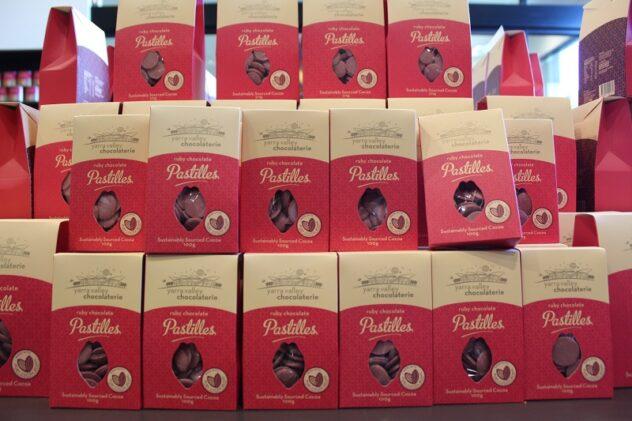
Ruby Chocolate Review: Expert Opinions
Lots of chocolate industry professionals were invited to the trade show where ruby chocolate was launched in 2017, but even years later ruby lacks social media exposure. If the target market for this chocolate is millennials, then Callebaut needs to have a social media strategy.
Because every chocolate expert I've spoken with has not been impressed. In fact, we're skeptical. When they announced that new line was being released initially as kitkats, that was the metaphorical last straw.
Chocolate experts began gossiping about it to each other, loudly. Some of us then decided to go do our own research, biting into ruby chocolate for ourselves. On my end, I invested in a few ruby kit kats (and later on, some bonbons and a ruby chocolate bar or two).
In keeping with the purity theme, ruby kit kats are bigger than your typical ones, and come only in individually-packaged boxes. I've noticed that half of us experts were anxious to try the new pink chocolate, while the other half still thinks it's all a big publicity stunt, even years later.
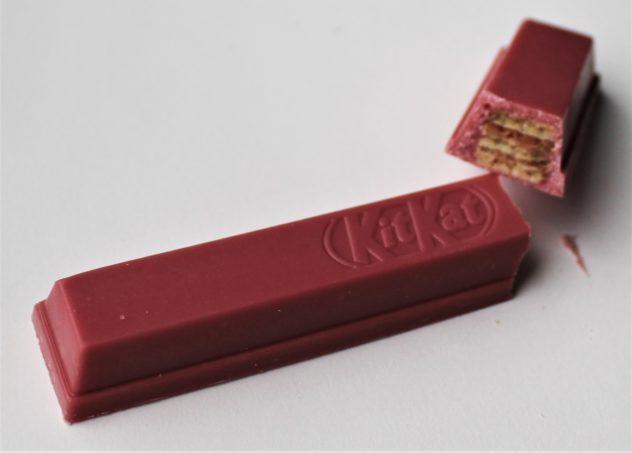
A big name in the fine chocolate world, Dom Ramsey, has been quoted in the New York Times as saying that "'Ruby chocolate’ is very much a marketing term." I have to agree, Mr. Ramsey.
Even after trying ruby chocolate US product Chocolove Valentine's Day bars, several different ruby chocolate bonbons, a few pure ruby cacao bars, and ruby cacao wafers, I fail to taste what's so special. It's just another sweet treat with an unusual appearance and a berry flavor.
Personally, my problem with the hype is in the sourcing aspect of it all. Callebaut even states on its website that only 36% of their cacao is sustainable sourced. So after all the money spent creating the product, who's to say that it's not made with any child slave labor?




What Does Ruby Chocolate Taste Like?
Ruby chocolate tastes like very sweet white chocolate with raspberry & lemon notes. Although, as I've mentioned in many articles, everyone has different taste buds. Additionally, these tiny papillae taste the five flavors at different intensities.
Saltiness, sweetness, bitterness, sourness, and umami can all show themselves to varying degrees. It just depends on where on your tongue you place the chocolate and what other ingredients are in a bar (like flour-based wafers).
Ruby chocolate is technically made in the milk chocolate style, using cocoa butter, milk powder, sugar, and just a touch of cocoa mass, among other ingredients (like citric acid). When I was doing chocolate research in the US, ruby chocolate was available in Chocolove Ruby Chocolate bars, made especially for Valentine's Day.
Unlike the snack bars, these were made of "pure ruby chocolate," though they were carefully advertised without once actually using the word "chocolate" to describe the bars. Other places to buy ruby chocolate in the US include Trader Joe's, which released their pink chocolate wafers back in February 2019.
Some other chocolate reviewers have noted that ruby chocolate has berry notes, like ice cream, but it fell too sharply on my taste buds to be ice cream-like. Barry Callebaut's marketing mater itself describes it as having "fresh berry-fruity taste and characteristic color." But it truly borders on sour.
Click here to see ruby chocolate prices on Amazon.

Ruby chocolate also lacks the light cocoa aroma of good white chocolates (which makes sense, since it's technically a milk chocolate). In fact, I don't even taste or smell any cocoa notes in ruby chocolate. It's all bright berries, admittedly in line with what Callebaut itself had to say about the flavor.
It makes sense, considering that one of the ingredients is citric acid, a very sour organic substance often extracted from citrus fruits. Going forward, ruby chocolate will be hard to blend into the background of a truffle or bonbon, as the bright flavor is something our palates aren't used to.
Bonbons I've had made with it have all tried to complement or enhance the berry fruitiness rather than contrast it, in particular the pink chocolate bonbons I had from Presquile Chocolaterie in Tokyo. The fruity character is hard to place as one berry or another, and the acidic finish can hit you harder on some bites than on others.
But I can already think of several other unique uses for the chocolate, from caramelized ruby chocolate to ruby chocolate-covered cacao beans. This may be a fun product to develop a learning curve for, as controversial as its start has been.

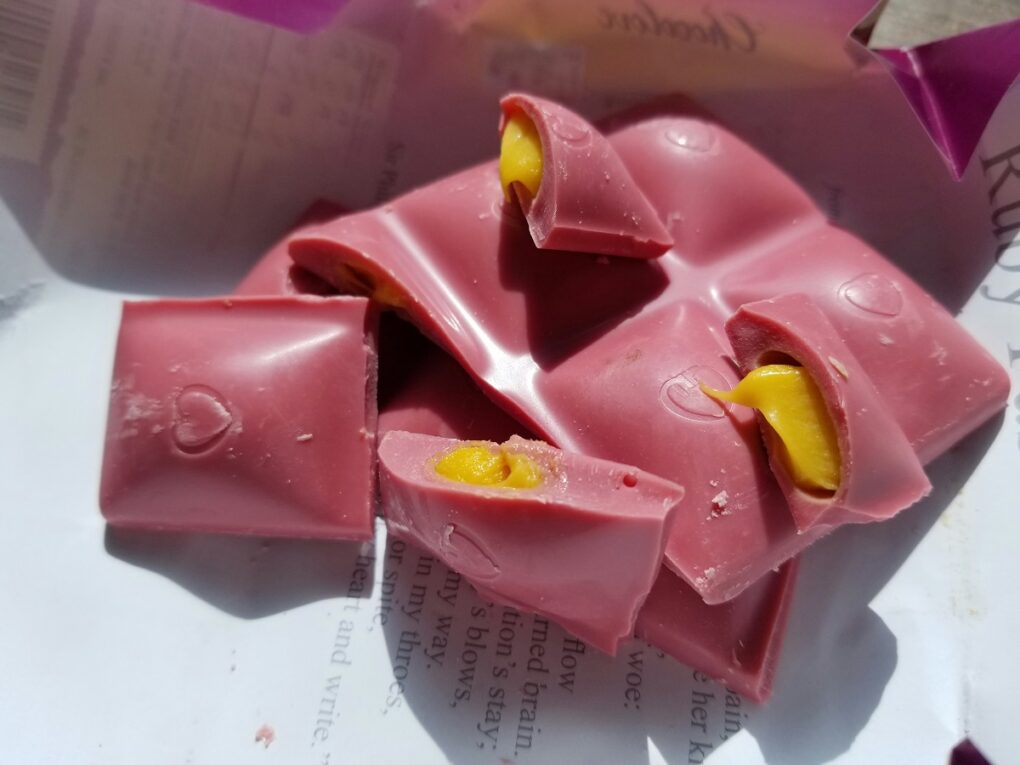
Is Ruby Chocolate Vegan?
At this time, vegan ruby chocolate does not exist. This is because ruby chocolate is the proprietary creation of the Belgian company Callebaut, which first released it in 2017, in China. In fact, unlike other types of chocolate, it's not even possible to make ruby chocolate at home. There's no recipe ruby chocolate, but what we do know is what it's made out of.
Ruby chocolate is made in a milk chocolate style, using cocoa butter and ruby cocoa beans, as well as sugar and milk powder, and a few select additional ingredients. It's believed that these additional ingredients are huge factors in what makes the chocolate so fruity, while the milk powder and sugar are what make it creamy and sweet.
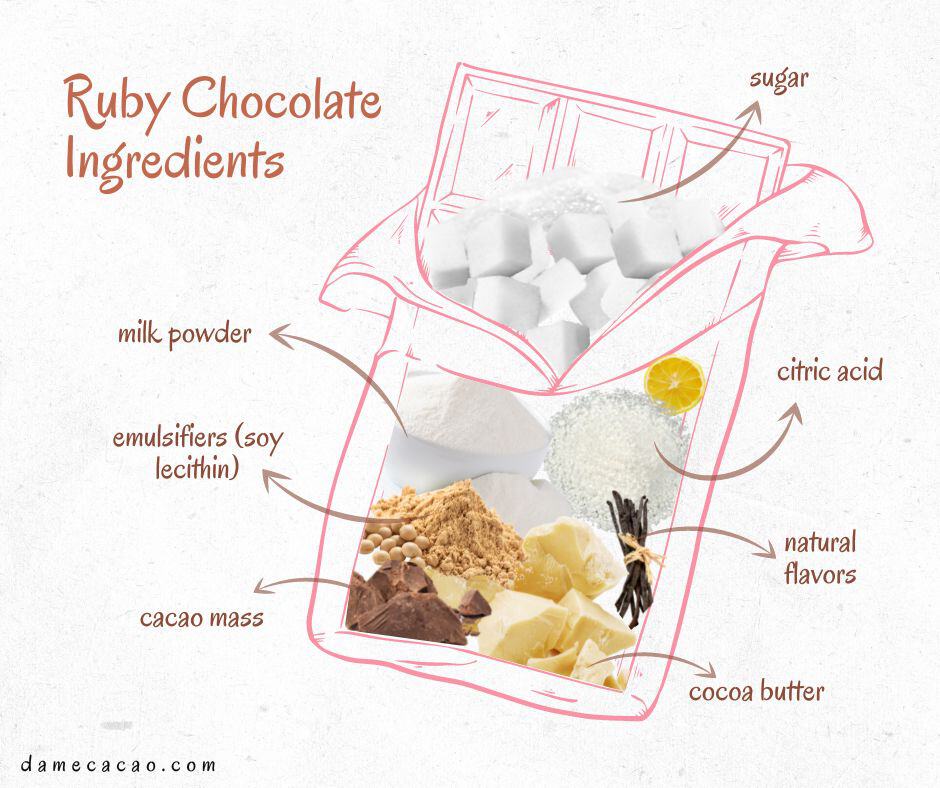
To make a vegan ruby chocolate bar, you'd have to swap out the regular cane sugar for a vegan-friendly alternative. Then you'd have to find a dairy-free milk powder, such as oat milk powder or even coconut milk powder. Additionally, the 'natural flavors' listed in the ingredients list should be vetted for animal origins, as well.
Unfortunately, all of these switches would change the chocolate's flavor in such a way that it may not taste like the ruby chocolate we've come to vaguely understand. Beyond that, since Callebaut is the exclusive manufacturer of ruby chocolate, it's up to them to create a vegan ruby chocolate version, and then to make it available to the wider market.
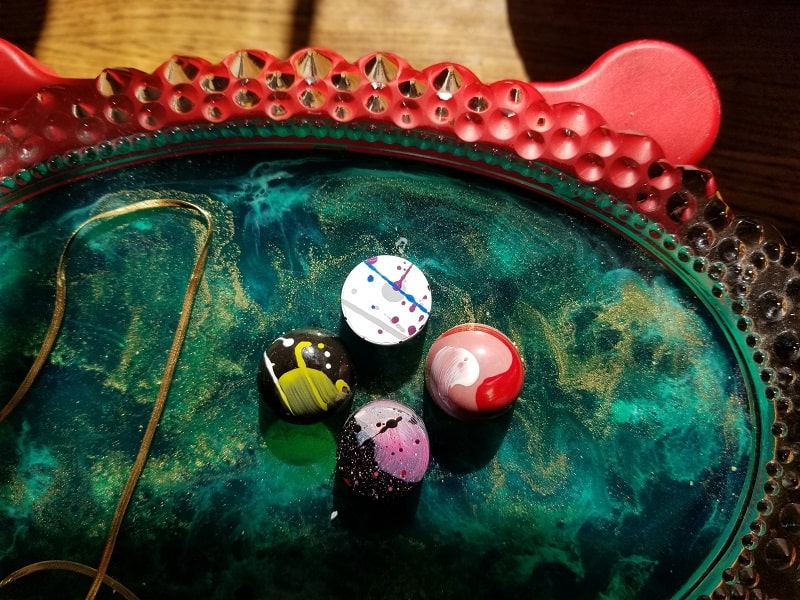
Ruby Chocolate Products
Since the 2017 release of ruby chocolate kitkats, a large number of products have been made using the confection. Following the wafer-based candies were "pure" ruby chocolate bars, first released in Europe.
The product has since been released to professional chocolatiers, who are the people making those bonbons and truffles you buy in chocolate shops around the world. Since bonbons have a shorter shelf life, chocolatiers have found some rather creative uses for ruby chocolate.
There are the typical plain pink chocolate bars, but I've also tried a version featuring candied violet petals & roasted almonds. Chocolatiers I've talked to have said it tempers like a white chocolate, despite the minimal addition of cocoa mass.
One ruby chocolate bonbon I had used raspberry puree as a complement for the confection's natural sour notes, but I'd love to see more play with salt and cacao nibs. Unfortunately there's still no vegan ruby chocolate version, otherwise I'd love to taste it with coconut rather than dairy milk.
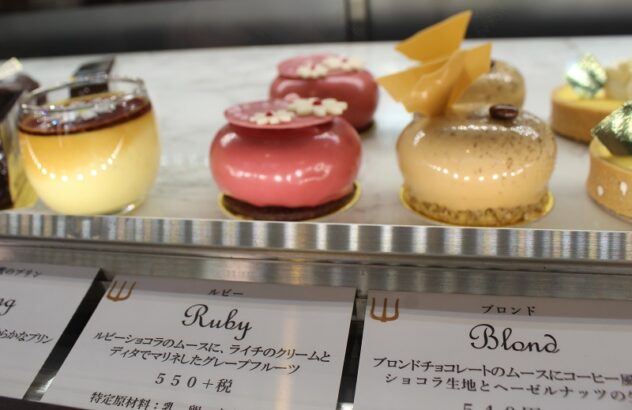
Also note that this rumor of Callebaut of discovering ruby cocoa beans is a lie contributing to the question of "is ruby chocolate fake?" It's merely processing which makes the cacao taste at all different, so future ruby chocolate products must take into account not only the flavor of the couverture, but also how ruby chocolate is made.
Is there any way to use the product's high sugar content as a base for more complexity? Can it be caramelized, as white and milk chocolate can? Does adding in some dark or milk chocolate cut the sweetness or ruin its fruity nature? Which dried fruits may pair well with its tartness?
Unfortunately, there's currently no way to make ruby chocolate at home, but there are a multitude of ways to make chocolate from scratch at home! You can easily find recipes to make chocolate from bean to bar at home, white, milk, or dark, but no ruby (for now).

Ruby Chocolate FAQs
While this depends on your definition of chocolate, I'd say that since ruby chocolate includes cocoa mass and cocoa butter, it is indeed real chocolate.
As stated above, unlike white, milk, or dark chocolate, there is currently no ruby chocolate recipe out there online. You can either dye white chocolate pink using red food dye, or experiment with home chocolate making through white, milk, or dark chocolate recipes.
Just like white and milk chocolates, ruby chocolate is made by grinding cacao derivatives (chocolate liquor, cocoa butter) with sugar and milk powder, though with a few additional ingredients, in this case: citric acid, soy lecithin, and "natural flavor." The pink color is said to come from the under-fermented cacao beans that Callebaut treats with their own process.
No. Simply put, ruby chocolate is produced in the style of a milk chocolate. Cocoa butter, sugar, and milk powder are the first 3 ingredients, meaning that ruby chocolate is vegetarian, but not vegan. Ruby cocoa beans are listed after those three on the ingredients list, and there is still 4% cacao mass in ruby chocolate.
Yes! If you'd like to, you can use ruby chocolate for baking the same sorts of things you'd use white chocolate for. As an example, you could make a cake or even frosting or brownies with ruby as the centerpiece.
And is ruby chocolate naturally pink? Well, a processed cacao product that Callebaut has deemed "ruby cocoa beans" is the key ingredient in ruby chocolate's color. One theory behind attaining that pink hue is that Callebaut bred the cacao trees themselves to grow fruits which naturally have more of a pink tint (99% of cacao is a reddish-purple color when raw). Ruby chocolate ingredients include cacao mass, cocoa butter, milk powder, and sugar (not in this order), so the cacao itself must be very pink to maintain its color. In addition, it's believed that they used fruitier, unfermented cacao beans treated with acids, in order to maintain that bright color. This would make sense, since ruby chocolate ingredients' lists always contain citric acid.
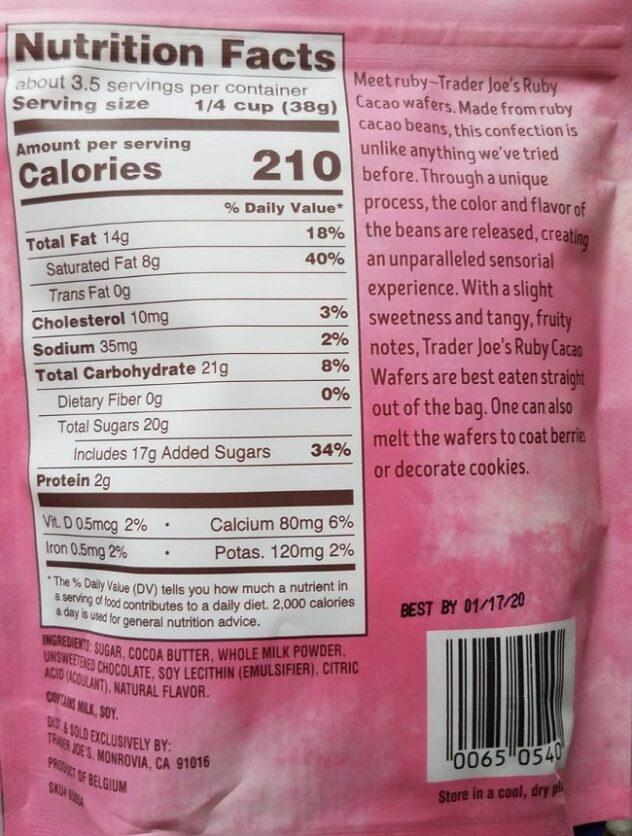
What is Ruby Couverture? What are ruby chocolate chips?
Ruby couverture is the name for the version of ruby chocolate in the US, while 'ruby chocolate chips' is the . Because of the United States' specifications of what can be called chocolate— specifications which ruby chocolate doesn't meet— up until recently the US ruby chocolate legally had to be sold under a different name.
So they chose couverture, a French term often used in chocolate to refer to a chocolate made for the purpose of crafting bonbons and other confections. Couverture is made with more cocoa butter than other chocolates, but this doesn't actually mean that American ruby chocolate will contain more cocoa butter than other versions.
The newest ruby chocolate USA releases will legally be able to call themselves chocolate for a limited amount of time, thanks to Callebaut's team of lawyers arguing for the confection to be classified as the 4th type of chocolate.
But I'm curious what this "fourth type of chocolate" would taste like made following a more traditional dark, milk, or white chocolate recipe.
Is ruby chocolate natural?
Yes, ruby chocolate is theoretically made as naturally as any other chocolate, using cacao beans and sugar, as well as extra cocoa butter and some milk powder. But it's unclear how many preservatives are in the ruby chocolate itself.
This is because it seems that chocolate manufacturer Callebaut actually has different formulations of ruby chocolate for different uses & regions, just as there are different percentages of white, milk, and dark chocolates. The pink chocolate used to make those Japanese kitkats may well taste different from that used by professional chocolatiers, and again different from future formulations.
Ruby chocolates out on the market now certainly have different flavors thanks to varying ratios of each ingredient. In addition, any preservatives used during the post-harvest processing of the cacao aren't going to be listed on a label (just like your strawberries and apples don't list the weed killers sprayed on them just before they were picked).
Ruby chocolate is also not organic or fair trade, if that's something you value, and it's certainly not made with transparently-traded cacao.
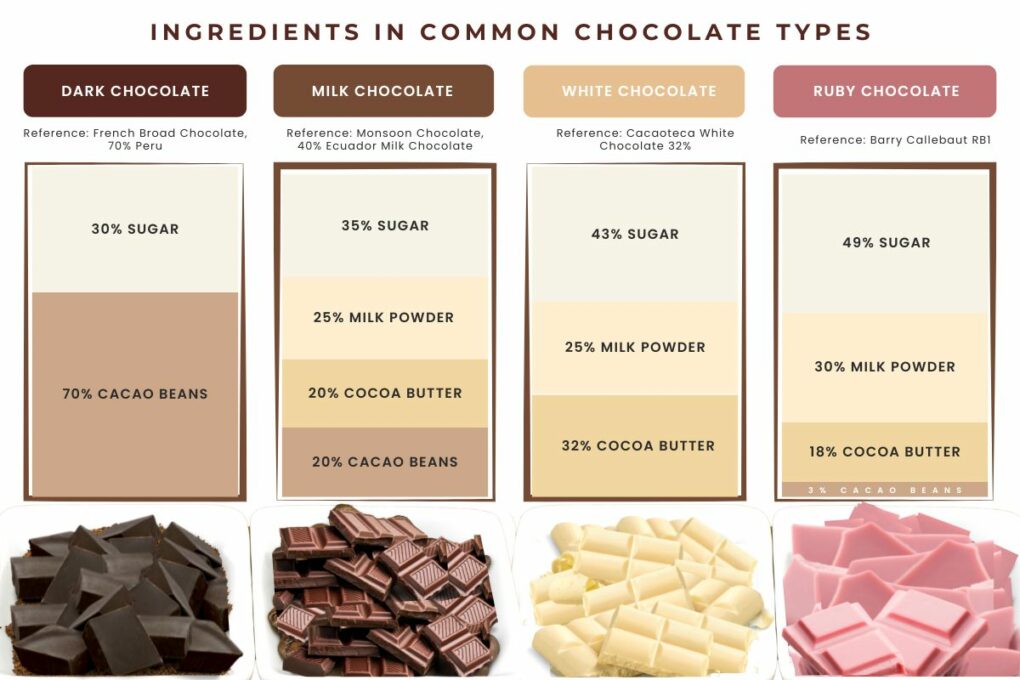
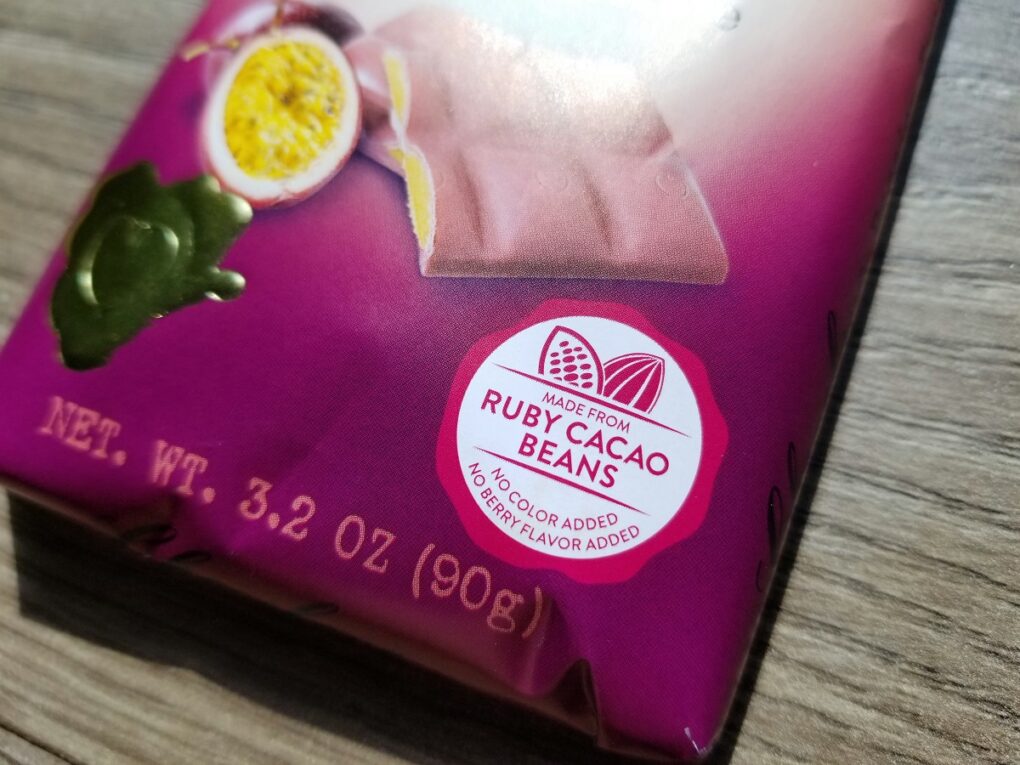
Ruby Chocolate: Where to Buy Internationally
How much does ruby chocolate cost?
When I visited the kitkat chocolatory in Seoul, South Korea just two weeks after the release, individual bars were no longer available. You had to buy them in sets of 5 bars (2 ruby + 1 of each white, milk, and dark) for ₩26500 (~$24USD).
This sounds outrageous for kit kats, but Japan and Korea go big on Valentine's Day. There's an 8% sales tax in Japan, but that's nothing compared to what the price was in the US and other territories. As of 2023, in Japan the going rate is still ¥400 + ¥32 tax, so ¥432 per kit kat (~$4USD). So the kit kats cost about $4USD in both Japan and Korea.
Since September 2018, however, you have been able buy ruby chocolate kitkats in general stores throughout Europe, and pink chocolate creations from chocolatiers across the continent. Prices vary greatly, with existing ruby chocolate bars from ChocoLove still being the cheapest option in the US as of 2023.
Where to buy ruby chocolate in the US?
There are now lots of ruby chocolate products for sale in the US, from packs of Ruby Cacao Wafers and Chocolove's Valentine's Day bar to ruby chocolates ordered internationally from other sellers. As Callebaut has announced, even more forms of the chocolate will be available soon.
The company has named the US ruby chocolate "ruby couverture," but has not yet specified all of the brands which will sell it. You can also buy a decent variety of bars online, though they're of varying quality.
NEW: To see prices & buy ruby chocolate now, click here.

How can you buy ruby chocolate internationally?
2023 UPDATE: Ruby chocolate bars are now available internationally from Fortnum & Mason, which charges hefty fees, but will ship to almost anywhere in the world (though you can buy ruby chocolate in the US for cheaper on Amazon).
Starting in April 2018, Ruby RB1 Chocolate was made available to selected chocolatiers and pastry chefs in Belgium. It's now also available in pink chocolate kit kat form in Albert Heijn stores in Belgium & The Netherlands; Żabka and Freshmarket stores in Poland; and in Rewe stores in Germany.
Starting in May 2018 there was ruby chocolate in Australia, and in September of the same year you could find ruby chocolate in South Africa. Note that large amounts of ruby chocolate is sold only to confectioners, not to individuals, so you can currently only find it at local chocolate shops.
Additionally, even though some bars use the pink chocolate, the chocolate coating the products may have had other ingredients added to it, diluting the flavor of the product. Callebaut has made no note of whether or not they will license the processing techniques or sell the "ruby chocolate beans" themselves, in the future.
If you have any lingering questions about pink chocolate, please leave them in a comment and I'll do my best to answer them in updated versions of this article.
Save this post on ruby chocolate for later!
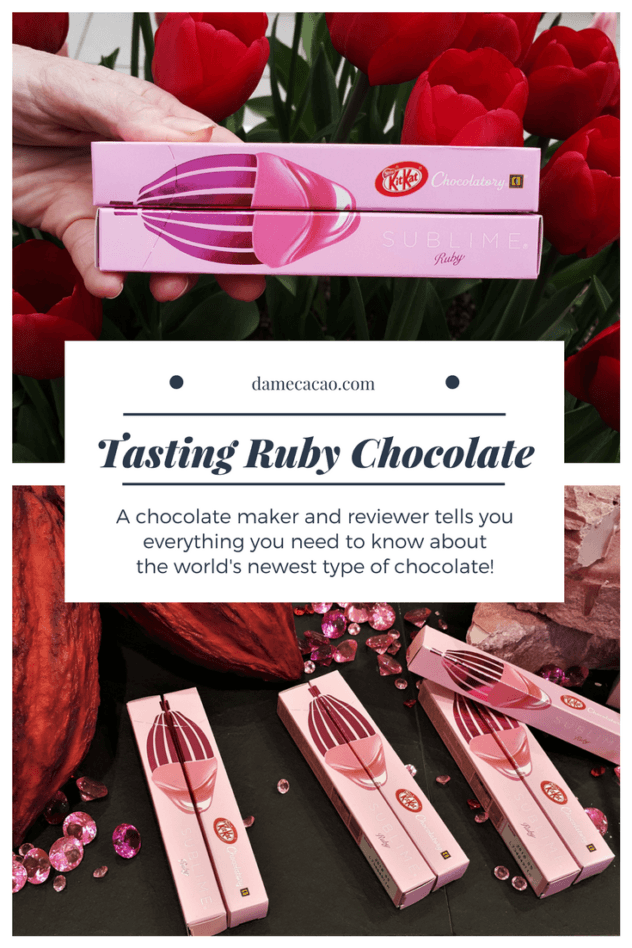

















Srikanth Dudaka
We at Chocolate mantra wanted to try few chocolates using Ruby chocolate. But the Ruby chocolate base is very expensive. I wonder if in India we can get such customers who can spend lot of money in trying the Ruby chocolate? Once I tasted it, it is a new flavor but not so unique so that customers could jump on it to try it.
My 2 cents on Ruby chocolate.
Thank you
Srikanth
Max
Yeah, I'm not sure it will be so popular in India, but I'm sure that Callebaut will try! I'm just hoping that others like you will come up wit tastier "ruby chocolates" of their own!
Srikanth
In India, Callebaut is selling Ruby chocolate. I have tried once but still didn't get perfection. It is expensive here. Wish other local brands make Ruby chocolate so that it would be affordable and we can do some experiments out of it.
Max
That would be great, I agree! Unfortunately, the process to make it is a secret. :/
But maybe one day it will be possible!
Jason
It’s the next bad invention. I bought a box of the ruby cacao covered Haagen Dazs bars and I’m sorry but they’re not good. The taste is not even intriguing. It reminds me of carob. Remember that horrible stuff? Just as bad as the golden Hershey bar. If it had some incredible health benefit I’d agree on some level, but it serves no purpose. They just removed cocoa from the bar. It’s just flavored fat and oils. It tasted gross. It should be stricken from memory forever. How can you ruin chocolate? Add orange or any other fruit flavor or take out the cocoa. Milk, dark, and maybe white to some extent. No pink chocolate ever again for me.
Max
Yupp! Nicely summed up, Jason. The last two years have not done it any favors, in my book, but I'm sick and tired of all the crappy information out there about it. So much propaganda, and certainly more to come. I just hope more people continue to seek out information about what they're actually putting into their bodies!
Gaby
As ruby beans are not fermented this much, could it be that ruby chocolate has less histamine than regular chocolate?
Max
So ruby cacao isn't actually a new type of cacao, but rather it's treated in a different way. Thinking of it as a ruby-processed cacao may be more straightforward, but since we're still unsure of how long and with what the beans are treated, ruby may be even higher in histamines than dark chocolate (which itself is histamine-freeing, rather than high in histamines). There is only a very tiny amount of this treated cacao in ruby chocolate, however, and most of the cacao content comes from the cocoa butter (which is fine for histamine sensitivity). BUT there's also a ton of sugar and milk powder and unknown amounts of citric acid & lecithins in ruby, so if you're sensitive to histamines, I'd treat it like a white chocolate of unknown origins and proceed with caution. I hope this helps, Gaby!
Nancy
I also get migraines so I thought I would just try out a little. I can get away with one (1) Oreo, but no more than that so let me tell you I savor that one Oreo! Also, I can eat white chocolate without any problems so I got some ruby peanut butter cups and ate two small ones. So far so good! I do have Imitrex on hand, however. BTW, it was delicious! Had a slightly sour taste but in a fruity, intriguing way. This may not be the most apt comparison, but was like the Starbucks Blonde Coffee of chocolate. Very intriguing taste.
Nancy
I ate eight of them and woke up with no migraine. Maybe it's the botox, but I think there's something different about the pink chocolate. Try at your own risk of course, but I was pleased.
Max
I'm glad to hear that you can finally enjoy another type of chocolate! Hopefully that means that the 4% of cacao mass in there (which itself is only about half solids) is small enough to not impact your allergy. Glad to hear you're enjoying a new chocolate. 🙂
Raine
Hi - I am a migraine sufferer and cannot eat milk or dark chocolate (haven’t had any for 40+ years!!) I don’t get migraine from white chocolate though. I was just wondering if the ruby chocolate would be worth a try? Can you give me any advice?
Max
Raine, I'm sorry to hear about your condition. If you're sensitive to cacao solids, even the small amount in many commercial milk chocolates, then I wouldn't risk it with ruby. Callebaut doesn't disclose the amount of cacao mass used in the chocolate, but it's certainly there, making it potentially triggering.